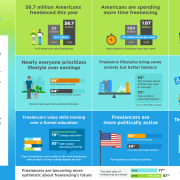A Snapshot of Vocational Education from 1992: How Have Things Changed Today?
As recently as 1992, most public high schools had extensive vocational training programs, many of which operated in the same buildings as college-preparatory programs. According to the National Center for Education Statistics, 97% of American students who graduated high school in 1992 had completed at least one vocational education course. And the average high school graduate in the U.S. had completed as many as four full-year vocational training courses.
Although the majority of American high school student still take at least one course that could be classified as career prep, a lot has changed, almost certainly because U.S. public schools have shifted their emphasis to preparing students for college. Before that change took place, the average suburban high school had a metal shop, a wood shop, and sometimes an automotive shop. With the growing emphasis on preparing students for college, those facilities got shipped out to vocational/technical high schools; if kids wanted to learn how to fix cars, they had to go there to learn the skills. And according to data from Brookings, the number of CTE credits earned by U.S. high school students declined 14% between 1990 and 2009, in large part because high schools were ramping up their focus on preparing students for college.
A Snapshot of Career and Technical Education from 1992
What vocational courses were high school students taking back in 1992? Not the same technical courses they are taking today. Again according to the National Center for Education Statistics, these were the most common vocational courses back in 1992:
- Agriculture
- Business and office
- Marketing and distribution
- Health
- Occupational home economics
- Trade and industry (including construction, mechanics and repairs, and precision production)
- Technical and communications.
And when students went on to attend junior colleges to prepare for their careers at that time, they studied virtually the same subjects.
Compare those courses to some of the more popular vocational and CTE studies that American students are pursuing today, which include:
- AI
- App development
- Computer graphics
- Cybersecurity
- Forensics
- Health
- Marketing, including social media marketing
- Pre-engineering and engineering
- Robotics
What are American schools doing about CTE courses and vocational prep today? Be sure to check out the latest research from the Student Research Foundation to learn more.
Related Career and Technical Education Posts
High Schools are Recruiting Teachers who Graduated College with CTE Credentials
What Influences Students to Enter Manufacturing Careers?
While Students Compete to Get into College, Good Skilled Jobs Remain Unfilled
Does CTE Represent a Return to Apprenticeship Models?
Certification Programs: The “Missing Link” in Higher Education
Attention Students: Share your views about what it takes to find the right path to college and to select a career. Participate in this year’s National College & Career Pathway Study and receive information on college and career opportunities that match your interests.










Leave a Reply
Want to join the discussion?Feel free to contribute!